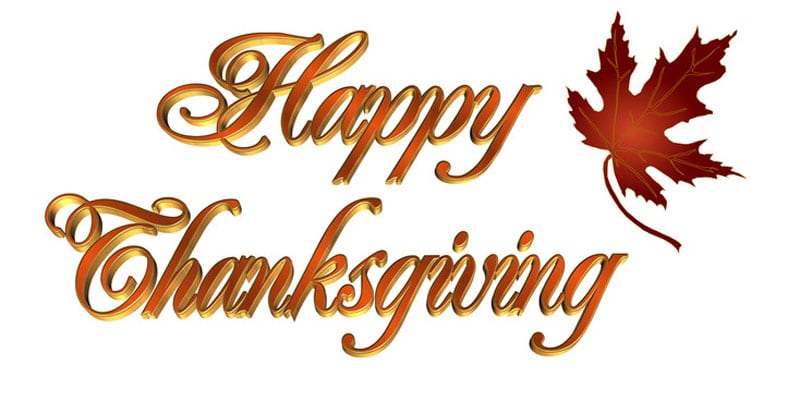Thanksgiving is the time of year when families and friends get together to share meals and celebrate the season’s joys. But even as they plan their menu and shop for ingredients, people need to be wary of foodborne illnesses and injuries which commonly occur at this time. Food safety is paramount. With Thanksgiving just a few days away, health officials are issuing warnings about the dangers of foodborne illnesses and how to ensure food safety. On their part, physicians need to educate patients about safe food practices, and be alert to recognize the symptoms of common foodborne illnesses and report them to public health authorities for investigation. Medical billing and coding companies should be prepared to help providers report the right diagnoses codes for reimbursement purposes.
The Centers for Disease Control and Prevention reports that almost one in six Americans, or more than 51 million people, fall ill each year from eating contaminated food. It is estimated that over 130,000 will be hospitalized with over 3,300 fatalities. During Thanksgiving, people need to take steps to ensure safe and healthy meals, especially with safe turkey cooking practices. They should also take care to prevent kitchen-related injuries such as cuts and burns which may require a visit to the emergency room (ER).
The five most common germs causing foodborne illnesses are norovirus, salmonella, clostridium perfringens, campylobacter and staphylococcus. The second most common bacterial cause of food poisoning, clostridium perfringens grow in cooked foods left at room temperature. In fact, clostridium perfringen outbreaks are most common during the November and December festive season. Common symptoms of a foodborne illness include: belly pain, nausea or vomiting, diarrhea, fever, chills, fatigue, headache, muscle pain, and bloody bowel movements. Other conditions that can call for an ER visit include cuts from opening cans and knives, burns and fires, and backyard and other outdoor injuries. Let’s take a look into the ICD-10 codes that may come into play during Thanksgiving:
- Category A05, Other bacterial foodborne intoxications, not elsewhere classified, has codes for the common bacteria that produce toxins that cause infections.
A05 (other bacterial foodborne intoxications, not elsewhere classified)- A05.0 (foodborne staphylococcal intoxication)
- A05.1 (botulism food poisoning)
- A05.2 (foodborne Clostridium perfringens [Clostridium welchii]) intoxication
- A05.3 (foodborne Vibrio parahaemolyticus intoxication)
- A05.4 (foodborne Bacillus cereus intoxication)
- A05.5 (foodborne Vibrio vulnificus intoxication)
- A05.8 (other specific bacterial foodborne intoxications)
- A05.9 (bacterial foodborne intoxication, unspecified)
- Y93.G Activities involving food preparation, cooking and grilling.
Y93.G cannot be used to report a cooking injury for reimbursement purposes. There are multiple codes in this category that contain a greater level of detail such as:- Y93.G1 Activity, food preparation and clean up
- Y93.G2 Activity, grilling and smoking food
- Y93.G3 Activity, cooking and baking
- Y93.G9 Activity, other involving cooking and grilling
- X10-X19 Contact with heat and hot substances: The ICD 10 codes in this category that may be used during Thanksgiving include:
- X10 Contact with hot drinks, food, fats and cooking oils
- X11 Contact with hot tap-water
- X12 Contact with other hot fluids
- X13 Contact with steam and other hot vapors
- X14 Contact with hot air and other hot gases
- X15 Contact with hot household appliances
- Y93.83 Activity, rough housing and horseplay: kids love a playful tussle and boisterous fooling around, but sometimes this can cause injury. Y93.83 describes the circumstance causing an injury, not the nature of the injury. There are separate codes for the place of occurrence and the type of injury.
- W14Fall from a tree: This code can be used to report a fall from a tree (to pluck a fruit, for instance). To code a diagnosis of this type, it is necessary to indicate W14.XXXA for initial encounter, W14.XXXD for subsequent encounter, or W14.XXXS for sequela. Billable codes with more details to describe the nature of the injury and results are necessary to get reimbursed.
- Y92.59 Injury at shopping mall: Patient crushed, pushed or stepped on by Black Friday shopping crowds? Use Y92.59 to report a diagnosis of injuries such as strains and sprains and even fractures and concussions.
Other unique ICD 10 codes that may come in useful for Thanksgiving as reported by Medscape include:
- W61.43 pecked by a turkey (43XA initial encounter, 43XD subsequent encounter, 43XS sequel).
- W61.49 (other contact with turkey) if patients gets charged or scratched by a gobbler.
- W60 contact with nonvenomous plant thorns, spines and sharp leaves.
- Y92.7 for the farm as place of occurrence. This is a category code that specifies the location of the injury (Y92.71 for barn, Y92.72 for chicken coop, T92.74 for orchard).
- Y93.6 sports/athletic activity (group): ICD 10 offers codes to report injuries caused by watching or playing flag/touch such as Y93.62 (football) Y93.66 (soccer), and (Y93.63) rugby; and. Specifying the sport is necessary to get reimbursed.
- Z63.1 problems in relationship with in laws
- K30 functional dyspepsia (indigestion)
- W29.1 contact with electric knife
- T78.40 allergy (unspecified) allergic reaction and hypersensitivity
- Z72.820 sleep deprivation
- T75.3 for airsickness, seasickness, and travel sickness
A Beckers Hospital Review report listed the number of patients diagnosed with holiday injury codes from November 2016 to January 2017:
- Fall due to ice and snow – 29,700 patients
- Fall from ladder – 11,700 patients
- Superficial frostbite – 9,700 patients
- Activity, sledding – 8,900 patients
- Shopping mall as place of injury – 2,400 patients
- Activity, cooking and baking – 1,600 patients
- Fall from tree – 1,400 patient
- Problems in relationship with in-laws – 200
- Airport as place of injury – 200
These statistics underscore the importance of knowing the highly specific external causes of morbidity ICD-10 codes. Selecting the most specific codes as possible is also critical. As physicians focus on managing patients with these holiday season related medical conditions and injuries, reliable medical coding and medical billing services are available to submit accurate claims.




